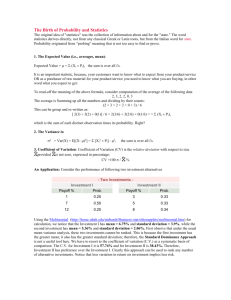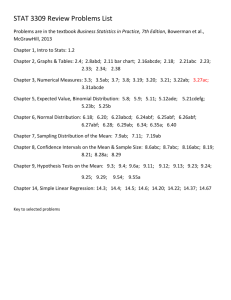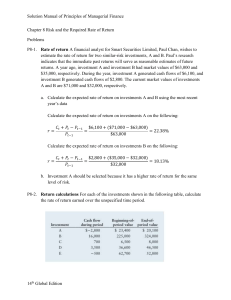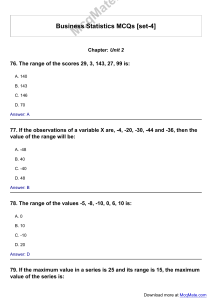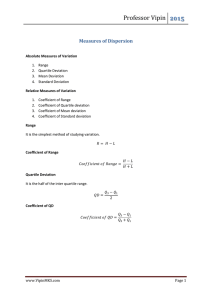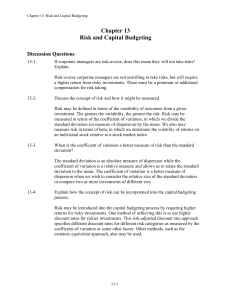Coefficient of Variation of investments?
advertisement
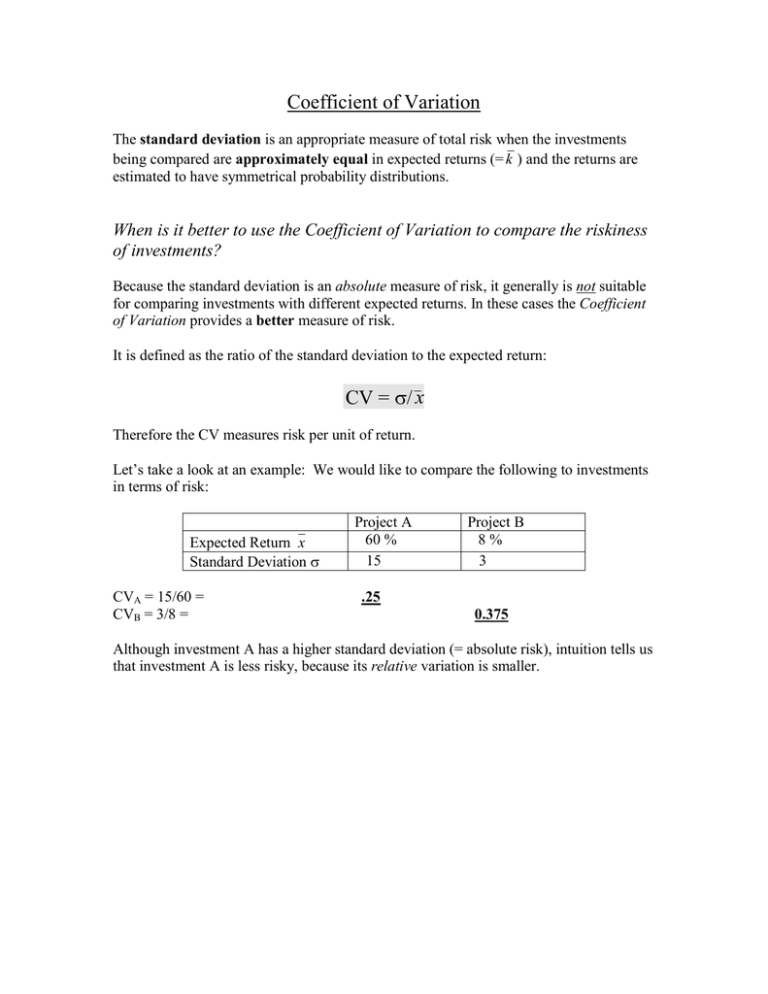
Coefficient of Variation The standard deviation is an appropriate measure of total risk when the investments being compared are approximately equal in expected returns (= k ) and the returns are estimated to have symmetrical probability distributions. When is it better to use the Coefficient of Variation to compare the riskiness of investments? Because the standard deviation is an absolute measure of risk, it generally is not suitable for comparing investments with different expected returns. In these cases the Coefficient of Variation provides a better measure of risk. It is defined as the ratio of the standard deviation to the expected return: CV = σ/ x Therefore the CV measures risk per unit of return. Let’s take a look at an example: We would like to compare the following to investments in terms of risk: Expected Return x Standard Deviation σ CVA = 15/60 = CVB = 3/8 = Project A 60 % 15 Project B 8% 3 .25 0.375 Although investment A has a higher standard deviation (= absolute risk), intuition tells us that investment A is less risky, because its relative variation is smaller.
